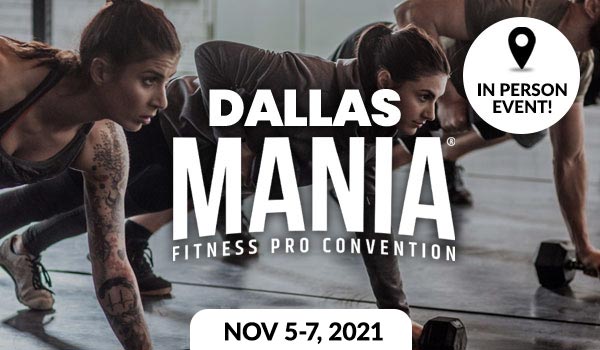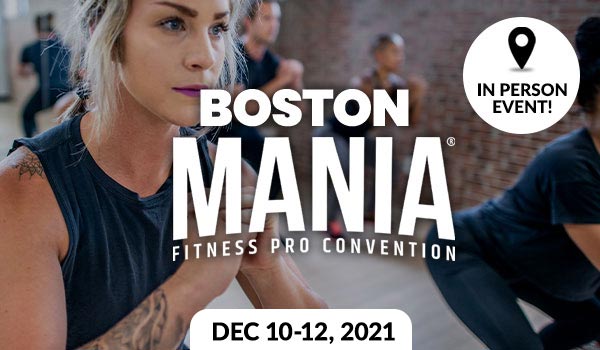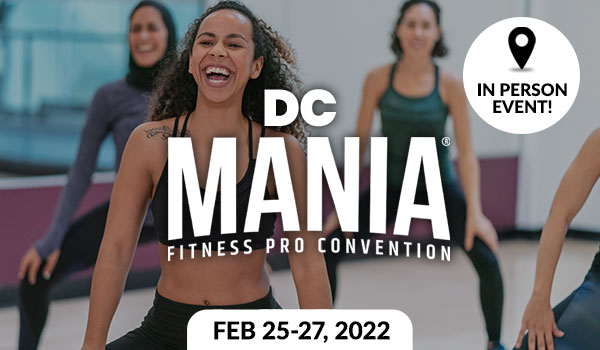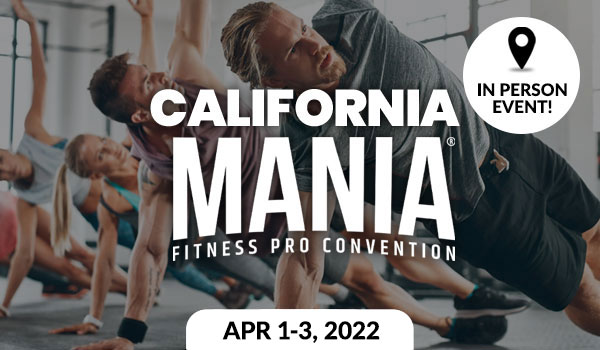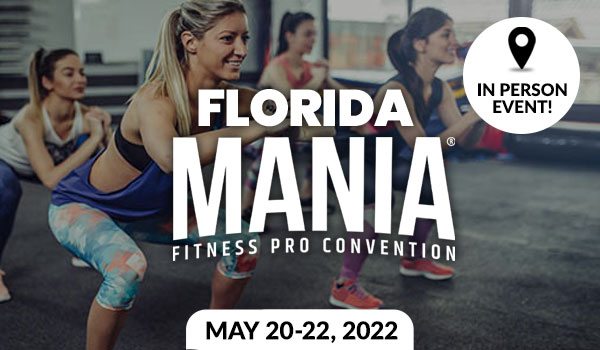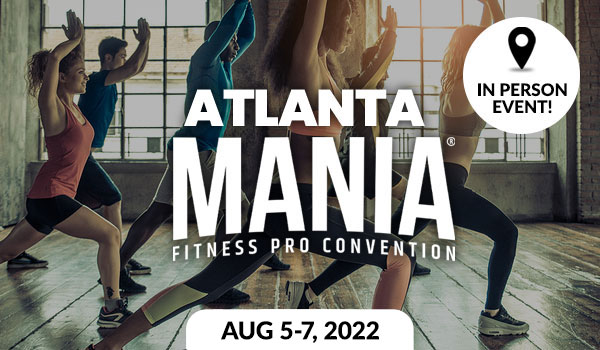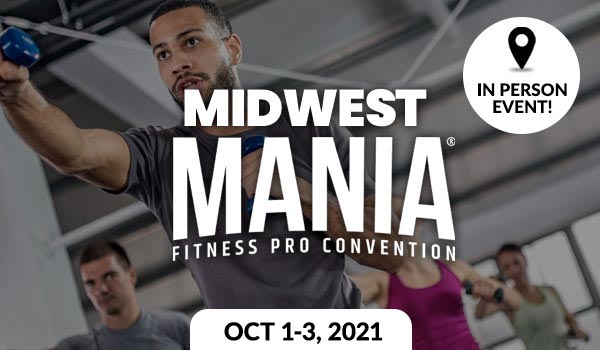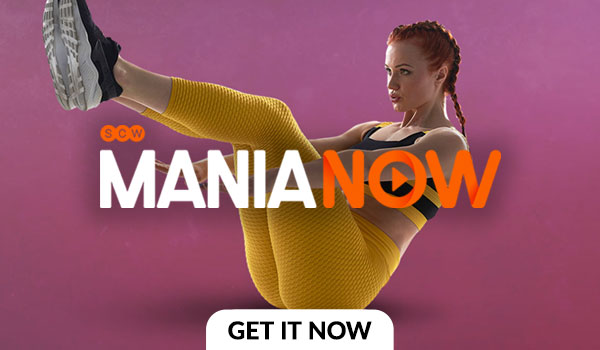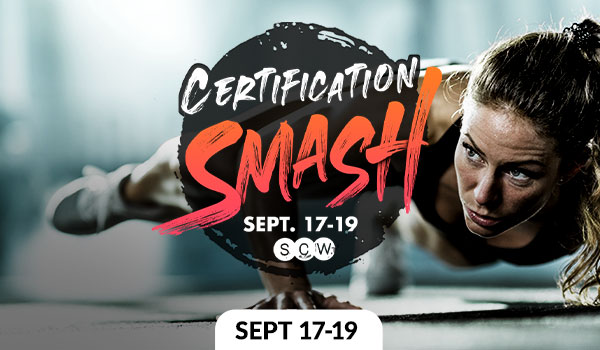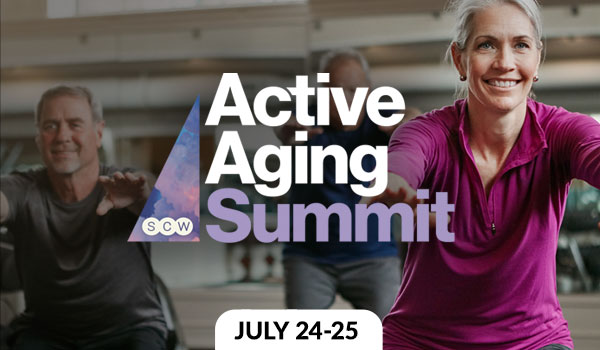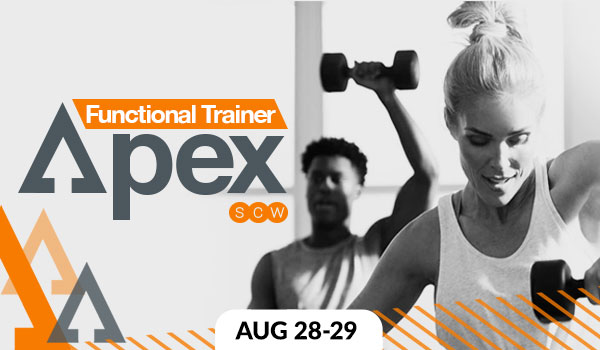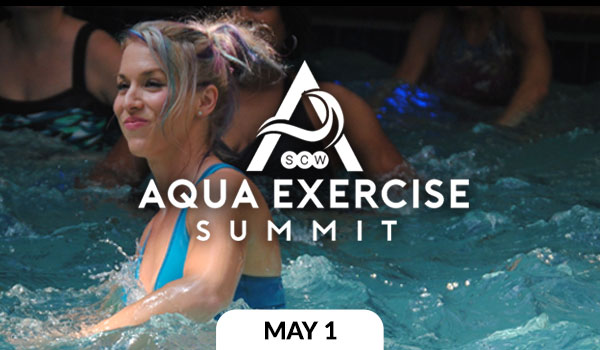
SCW Spotlite: Issue 33

Prepare for Your Clients & Yourself
by Robin Taylor
We have all heard of the “freshman 15” when going off to college, but what about “pandemic pounds?” Over the past year, many people have neglected exercise or regular movement causing obesity and other health-related factors to climb to unheard of levels. With much of the country now undergoing COVID-19 vaccinations, more people have begun returning to the gym and wellness centers, as well as adding regular physical activity back into daily schedules. Some will choose to continue exercising on their own, but others may require the assistance of a group exercise instructor, personal trainer or health coach as they return to a more normal routine.
 As fitness professionals, we are responsibility for keeping our clients safe during sessions, which includes training them at their appropriate level and understanding as much as possible about them. As a client, you are expected to be upfront about any past pertinent medical history, as well as any current diagnosis or injury. There are several ways for instructors, trainers, and coaches to gather information. Some as simple as just asking questions and taking notes, but that method would not be legally binding in the case of lawsuit. The most common practice in gathering information about a client is to have them fill out a Physical Activity Readiness Questionnaire (PAR-Q) or a Health History Form. Both of these documents can be considered legal if they are signed by the participant. Either one or both are filled out by the client prior to starting an exercise program or changing to a more intense routine. The ACSM guidelines require every facility offering exercise equipment to provide a general pre-activity risk assessment.
As fitness professionals, we are responsibility for keeping our clients safe during sessions, which includes training them at their appropriate level and understanding as much as possible about them. As a client, you are expected to be upfront about any past pertinent medical history, as well as any current diagnosis or injury. There are several ways for instructors, trainers, and coaches to gather information. Some as simple as just asking questions and taking notes, but that method would not be legally binding in the case of lawsuit. The most common practice in gathering information about a client is to have them fill out a Physical Activity Readiness Questionnaire (PAR-Q) or a Health History Form. Both of these documents can be considered legal if they are signed by the participant. Either one or both are filled out by the client prior to starting an exercise program or changing to a more intense routine. The ACSM guidelines require every facility offering exercise equipment to provide a general pre-activity risk assessment.
The Physical Activity Readiness Questionnaire (PAR-Q) is a form originally created by the British Columbia Ministry of Health and Multidisciplinary Board on Exercise and has since been adopted by the American College of Sports Medicine Standards and Guidelines for Health and Fitness Facilities. This simple self-screening tool, filled out by the client or exercise participant, provides fitness professionals data about possible hazards of exercise based on health history, current symptoms and risk factors. The questions are designed to help the professional learn about the client’s physical and mental challenges, as well as if intense activity creates any health dangers. It is not a complete medical history and if information reveals a health issue, it is recommended to seek a general practitioner or doctor’s referral. It can also help a trainer create an ideal exercise program for each client. It is usually short, kept confidential, and is usually valid for 12 months. PAR-Q is a key element in the assessment process and an excellent introduction between the fitness professional and the client.
Generally, a PAR-Q only has seven simple yes or no questions, making it quick and easy to take. The questions should focus on lifestyle facts, for example exercise, smoking, weight, and dietary habits. If the response is “no”, then there is little or no risk to the client and an appropriate exercise program can be created. If “yes” is answered to any of these questions, it is recommended that the client answer several more about specific health issues. These extra questions are known as a PAR Q+. The client is also advised to speak with a physician for possible medical clearance. There is no “one size fits all” questionnaire. Each business is different along with each client. The most helpful form may be the one you create.
 Here are some ideas for PAR-Q questions. You can break them down into categories or just randomize them.
Here are some ideas for PAR-Q questions. You can break them down into categories or just randomize them.
Heart related:
- Has your doctor ever said that you have a heart condition?
- Has your doctor ever recommended any physical activity?
- Do you feel pain in your chest when you do physical activity?
- In the past month, have you had chest pain when you were not doing physical activity?
Physical/Brain related:
- Do you lose your balance because of dizziness or do you ever lose consciousness?
- Do you have a bone or joint problem that could be made worse by a change in your physical activity?
- Do you know of any other reason why you should not do physical activity?
- Are you pregnant or have given birth in the last 6 month?
- Have you had recent surgery?
Medication & Smoking:
- Are you taking blood pressure, diabetes, heart or any other prescribed daily medicine?
- Do you smoke?
- If you are a smoker, how many cigarettes do you smoke per day?
Exercise Habits:
- Do you exercise regularly?
- How many days per week do you exercise for at least twenty minutes at moderate to strenuous pace?
- Do you have any limitation issues in regards to exercise?
Weight & Dietary related:
- Have you lost or gained 10 pounds or more in the last month?
- What was your weight a year ago compared to today?
- Are you currently dieting or fasting?
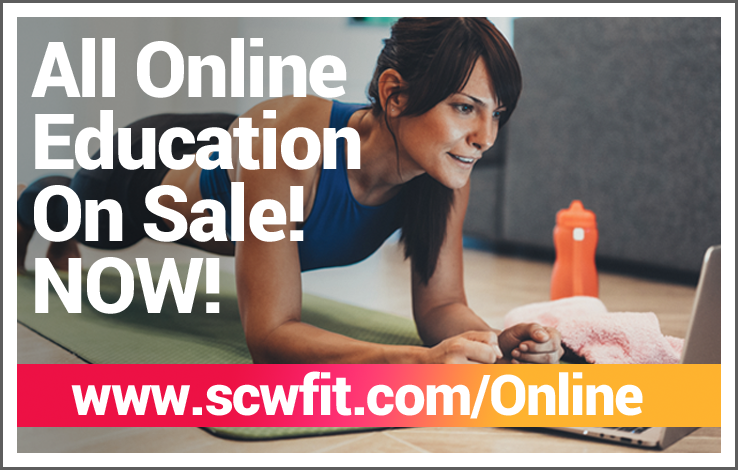 A Health History Form, on the other hand, provides the fitness professional with medical information to evaluate and assist a client. It helps determine their current health and fitness level and ensures the participant is physically ready to start an exercise program. This way the trainer or instructor can identify any contraindicated moves when preparing. Questions include personal, emergency, vital and medical data. A complete health review should include data regarding last physical exam, medications, stress level, hospitalizations, and alcohol intake. It is also important to know about family history, including diabetes and cancer. The form and information are kept confidential unless permission to share has been granted.
A Health History Form, on the other hand, provides the fitness professional with medical information to evaluate and assist a client. It helps determine their current health and fitness level and ensures the participant is physically ready to start an exercise program. This way the trainer or instructor can identify any contraindicated moves when preparing. Questions include personal, emergency, vital and medical data. A complete health review should include data regarding last physical exam, medications, stress level, hospitalizations, and alcohol intake. It is also important to know about family history, including diabetes and cancer. The form and information are kept confidential unless permission to share has been granted.
When choosing your documents or creating your own, protecting yourself and your business should be a priority. Unfortunately, this world is very litigious, so personal information and health history needs to stay confidential. Fitness professionals need to see themselves in the same precautionary realm as doctors, so having a caveat included in a PAR-Q and health history form is pertinent. Here is an example to include:
“I agree that the information contained and collected in this health history form is true and correct. I also agree that the instructor, trainer, and the fitness facility will not be responsible for retaining or using any of the information contained herein. The information collected will only be used in this initial interview for general fitness and wellness recommendations.”
 Be sure to have the client sign and date it accordingly. Remember… This is business information and not legal advice. You should always consult with a lawyer in your particular state regarding any and all contractual arrangements. “Make sure all your written agreements are drafted clearly, communicate your expectations and let your clients know you have their well-being at heart,” recommends Cory Sterling, lawyer and founder of Conscious Counsel.
Be sure to have the client sign and date it accordingly. Remember… This is business information and not legal advice. You should always consult with a lawyer in your particular state regarding any and all contractual arrangements. “Make sure all your written agreements are drafted clearly, communicate your expectations and let your clients know you have their well-being at heart,” recommends Cory Sterling, lawyer and founder of Conscious Counsel.
Lastly, think of your client. These forms should be easy to fill out. You can provide separate documents, PAR-Q and Health History, or they can be combined for convenience. Have the option of either digital or printed forms. Many of the Active Aging population prefers physical paper, plus it is easier to read. The Gen Z only knows paperless. Much of their activity is completed on a phone or laptop. No matter which type of media you choose, be sure to store the information in a safe place, whether file system or computer back-up. Also don’t forget to get a copy of a doctor’s release form if applicable and store that as well.
There are many ways to prepare for your clients and have your clients prepare for you. Whether it is written or verbal, communication is key. Honesty is always the best policy and leaving out any important medical, physical or emotional information could not only impede on the relationship between the fitness professional and the participant, but it can also cause harm or danger. Having inclusivity, via forms, is the desired process and the cleanest way to have a personal training or group exercise business run smoothly.
Just a quick note, if you are uncertain about whether your legal agreements are drafted properly and include necessary provisions (pandemic proof) that protect both you, your community and your clients, we are here for you! Send an email to cory@consciouscounsel.ca and he will guide you to ensure you are at best legal practices.
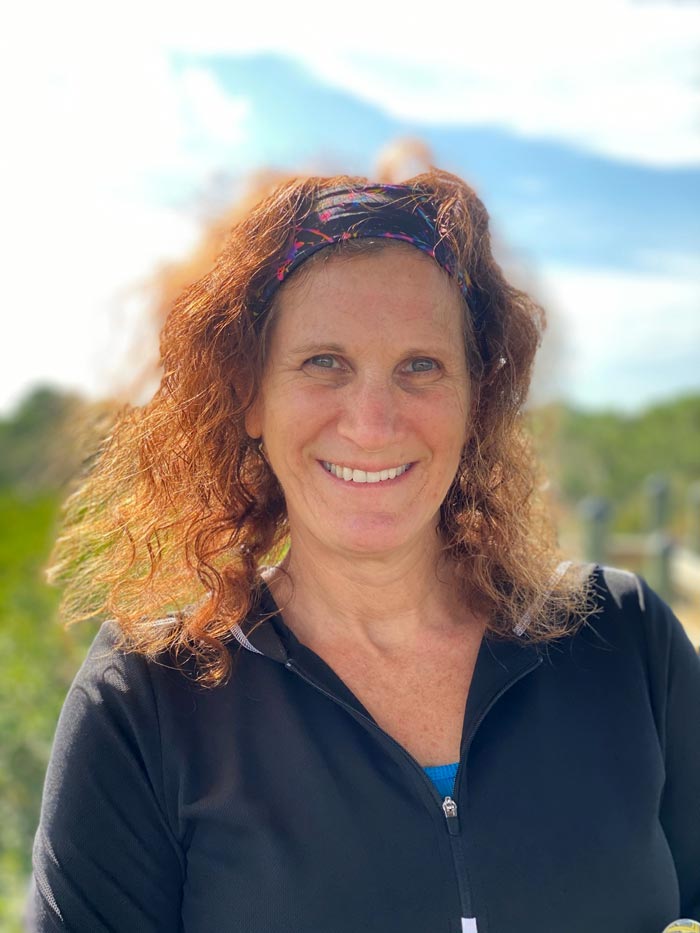 About the Author, Robin Taylor
About the Author, Robin Taylor
Robin is the SCW Editor for Spotlite, Tidal Waves and Weekly Work-UP, as well as Assistant Product Manager for MANIA® Fitness Conventions and Team Manager for WATERinMOTION®. Having taught Aquatic Fitness for over 15 years, Robin is AEA and AFAA certified and a WATERinMOTION® Champion. She has participated in several WIM educational videos, as both a pool participant and on-deck presenter. Robin has been an employee of SCW for almost five years. She is married and has two adult daughters and has a bachelor’s degree in journalism from the University of Florida.

Is Chocolate Milk a Good Post Workout Drink?
by Samantha Okrasinski
If you’re reading this, you probably just Googled ‘Is chocolate milk a good post workout?’ Don’t worry, I’ve done the same thing like 31 times. The first 23 times were to make sure my eyes weren’t lying to me and that chocolate milk (the best drink on the planet) was, in fact, a good post workout. The last 8 times were just to get a better understanding of which chocolate milk I should buy.
 But what I found is that a lot of the articles on the internet don’t dive into enough detail as to what type of chocolate milk is a great post workout. So that’s what I’m about to break down for y’all real quick.
But what I found is that a lot of the articles on the internet don’t dive into enough detail as to what type of chocolate milk is a great post workout. So that’s what I’m about to break down for y’all real quick.
If you were once a kid like me, (which I can only assume most of you were,) you know that not all chocolate milks are created equal. Each has a distinct taste and maybe even slide down the throat differently when we drink them. But what we never looked at or thought about is that all of these chocolate milks also had different nutritional makeups. In other words, some chocolate milks are healthier for you and may even be a better post workout drink than others.
Point being chocolate milk needed to change. And while it may SEEM like a simple product, chocolate milk brands have been reformulating, iterating, plant-erating, nut-erating, you name it, for years. With so many consumer personal preferences and dietary needs, even the chocolate milk market can be overwhelming.
Most chocolate milks out there have loads of added sugar. Even after exercising, your body does not NEED this. Some added sugar is fine, but the majority have dozens of grams which means if you’re working out to be healthy, this kind of defeats the purpose. You’ll want one with find one with limited added sugar.
“So, what chocolate milk should I drink after a workout!?” Well… Let’s break it down so you can figure out what works best for your palate and lifestyle.
1. Regular Chocolate Milk
Good ol’ fashioned dairy milk. Chocolate milk is simply milk, cocoa, a processed or natural sweetener and a gum used as a thickener such as Xanthan, Agar-Agar and Cellulose. Some milks are fortified, meaning extra vitamins and minerals are added (such as Vitamin A and D) to help consumers who are lacking those nutrients in their diets. The average cup of chocolate milk has around 170 calories, 8 grams of carbs and a whopping 27 grams of sugar.
2. Protein Chocolate Milk
After a workout, your body needs protein to help heal those micro-tears in your muscles. Ideally you want the perfect balance between carbs and protein. Studies have shown that chocolate milk does just that. Various brands can range anywhere from 9-25g of protein. BUT beware, not all protein chocolate milks are created equally, so be sure to look out for added sugar.
3. Oat Chocolate Milk
Oat milk is a hot commodity these days. The new almond milk, some might say. Oat milk is essentially just oats and water combined, and then strained. Flavoring, sweeteners and some sort of a shelf stabilizer is added. Oat milk contains beta-glucan, a fiber found it oats that is said to contain heart benefits. But, as oat milk succeeds in the lactose free department, it does NOT succeed in the protein department. The leading chocolate oat milk brands only have 3g of protein.
4. Almond Chocolate Milk
While almond milk has taken a back seat to the new trendy oat milk, it’s still a favorite in the plant-based milk world. The process for making almond milk is similar to the process of oat milk. Combining almonds and water, blending and then separating almonds from the milk will get you the base of almond milk. Chocolate almond milk has an average of about 90 calories, 11g carbohydrates and only 2g protein. Unfortunately, though, almond milk isn’t as environmentally friendly as you’d think. It requires MORE water than any other dairy alternative. According to an Oxford study, it takes approximately 130 pints of water to produce a single glass of almond milk. The more you know, right?
5. Lactose Free Ultra-filtered Chocolate Milk
For those who feel a little off after drinking regular chocolate milk, have no fear. Lactose free ultra-filtered milk is not only nutritious, but also delicious (sweet rhyme). The milk goes through an ultrafiltration process that removes the lactose, and excess sugars, so you’re left with milk that is lower in sugar AND digestible. Imagine a dial pad where you can control the levels of protein, sugar, and lactose in your milk. Pretty cool, right?
 Another important nutrient to look at when choosing your post workout chocolate milk is protein, which your body needs to replenish your muscles. According to Men’s Health, right around 20g protein is optimal after a workout, depending on your body weight. Most chocolate milk only has one gram of protein per ounce, meaning you’d need 20oz to get the protein you need. And while likely quite tasty, that would come with some unwanted and unneeded extra calories. So, you’ll want to look for a chocolate milk with a higher concentration of protein per ounce.
Another important nutrient to look at when choosing your post workout chocolate milk is protein, which your body needs to replenish your muscles. According to Men’s Health, right around 20g protein is optimal after a workout, depending on your body weight. Most chocolate milk only has one gram of protein per ounce, meaning you’d need 20oz to get the protein you need. And while likely quite tasty, that would come with some unwanted and unneeded extra calories. So, you’ll want to look for a chocolate milk with a higher concentration of protein per ounce.
The answer? #5 Chocolate Ultra-Filtered Milk, from Slate Milk, the perfect post workout chocolate milk.
The output of this ultra-filtration process is a near sugar free, slightly concentrated milk. Because of this, chocolate ultra-filtered milk products typically contain LESS sugar and MORE protein per ounce than regular chocolate milk – making them the ideal, #1 shamelessly chuggable option as a post workout.
You asked if chocolate milk is a good post workout drink, well we answered it! For more information about Slate Milk and other lactose free, low sugar and high protein beverages, check out their website and get a taste of the chocolate milk built better.
 About the Author, Samantha Okrasinski
About the Author, Samantha Okrasinski
Samantha Okrasinski is a Boston-based contributing author for Slate Milk. Her undergraduate studies lead her out West where she earned her B.S. in Nutrition with a minor in Food and Nutrition Management at Arizona State University. A self-proclaimed foodie, amateur yogi, and dog mom, she enjoys spending her time being outdoors and getting creative in the kitchen. She is currently on the path to becoming a Registered Dietitian where she’ll practice doing what she loves; working with food and helping others.

The Power of Podcasting: Create Your Own Platform & Leverage Your Brand
by Christine Conti
Podcasts are “where it’s at!” Did you know podcasting is now the most effective and cost-efficient marketing tool on the planet? They provide wide-scale visibility to exponentially grow your business and increase brand awareness. In fact, the simple act of appearing on an established podcast as a featured guest can drastically improve your search engine optimization (SEO) and increase clients. Learning how to use this extremely affordable and far-reaching platform to your advantage may be the key to lasting success!
WHY PODCAST? HERE ARE SOME QUICK FACTS!
The Next Generation of Marketing
Forget spending money on print advertisements, billboards, or radio ads. Podcasting is “where it’s at!” Every business needs a podcast! It is effective, targeted, cost and time efficient, super fun marketing!

On-Demand, Passionate & Targeted Content
At any time, listeners can download, subscribe and like their favorite podcasts. Listeners may break up their shows into multiple sessions or listen all at once. Listeners can also search for podcasts based on their personal interests, hobbies, and more.
It’s FREE
Not only is it relatively cheap to produce your very own podcast, but it is FREE for listeners to download and enjoy your show. Podcasts provide value to listeners around the world while also promoting your business and brand without asking for a payment or initial “buy-in.”
Accessibility
If you own a smartphone, a computer, a tablet, or have access to Wi-Fi, you can download and listen to FREE podcasts.
Opportunity for Intimate Connection
Podcasts allow you to tell “your story” in “your own words” and promote your business, brand, or values at a personal level. This is an opportunity to show empathy, authenticity, and share “your voice” with the world. Remember, the most successful businesses and products start with a “story.”
Broach Reach
Unlike television, newspapers, radio stations, and print advertisements, podcasts are available around-the-world and not just specific to certain areas. This platform is a must for anyone who conducts business online.
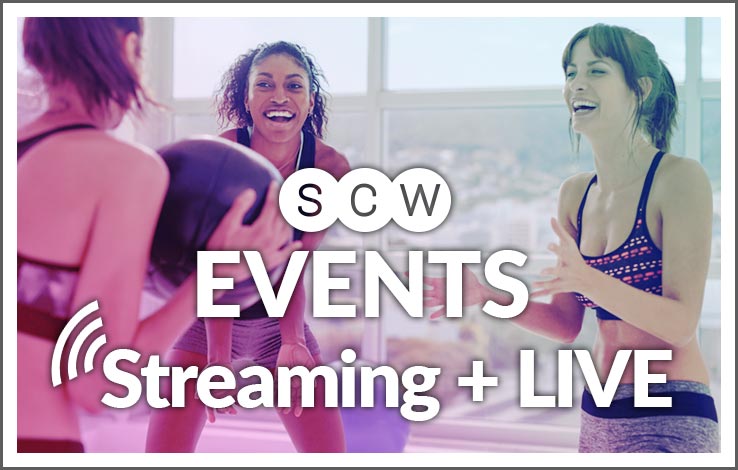
Instant Authority & Credibility
As a fitness or medical professional, it is important to utilize a platform where you can offer valuable resources or information. Podcasts allow for you to be an instant authority in a specific field in addition to promoting your services on a large scale.
Statistics
Podcasts offer analytics that track the number of subscribers to your show as well as the number of downloads for each episode. The more downloads, the more people are learning about you, your mission, your values, and your business.
It’s FUN!
This is YOUR chance to create your own platform! Podcasting allows you to talk about the issues, stories, and topics that are most interesting to you! You can interview fascinating guests and use the podcast as an opportunity to cross-promote your businesses. Most of all, you make the rules and create the podcast format that works for you!
To learn more about Christine Conti, her podcast, Two Fit Crazies & a Microphone, and her fitness company, Conti Fitness LLC., check out her websites www.contifit.com and www.twofitcrazies.com. Also check out her wellness and business sessions at the upcoming Live-Stream MANIA® Express.
 About the Author, Christine Conti
About the Author, Christine Conti
Christine Conti is an international fitness educator, consultant, and CEO of Conti Fitness & Wellness, LLC. She is a former investment banker, English teacher, coach, and 20-year veteran in the industry. Christine co-hosts Two Fit Crazies & A Microphone Podcast and owns TFC Productions. She is the author of the Arthritis Fitness Specialist Course, co-author of the Eating Disorder Fitness Course, and serves on the advisory board for the MedFit Education Foundation. Christine is the creator of Let’s FACE It Together™ Facial Exercise and Rehabilitation and co-founder of FallPROOF, Fall Prevention. She is also an autoimmune disease fighter, ultra endurance athlete and 2x IRONMAN.

Helping Others While Making a Living
by Jane Curth
Most fitness professionals got into the industry for one reason — to help others transform themselves into healthier people with a higher quality of life. Talk to anyone who has gone from eating poorly and sitting on the couch to eating right and exercising, and the difference in quality of life is palpable, almost like a religious experience.
 We can all tell stories about how pursuing fitness has made us better people. We relate to others, encourage through hardship, and push ourselves to new heights. But as fitness professionals, there’s also a darker side. You still have to earn enough money to pay rent. Even though fitness is very popular, it can still be incredibly difficult to find people willing to pay fitness professionals what they’re worth for their time.
We can all tell stories about how pursuing fitness has made us better people. We relate to others, encourage through hardship, and push ourselves to new heights. But as fitness professionals, there’s also a darker side. You still have to earn enough money to pay rent. Even though fitness is very popular, it can still be incredibly difficult to find people willing to pay fitness professionals what they’re worth for their time.
With so many options out there — from finding a personal trainer to looking up free videos on YouTube and Instagram —it can be an uphill battle finding enough clients to make a living, or so it may appear.
Fortunately, there’s a whole host of people who desperately need your skill set to live a better life and aren’t getting your attention. Furthermore, these people have the time to train with you, and statistically speaking, the funds available to afford it — Active Agers.
Who are Active Agers and what is active aging?
This concept was put together by the World Health Organization in the early 2000s. The goal was to focus on people living into later years with better health and wellness outcomes. An Active Ager is seeking ways to be more energetic in their lifestyle and looking to achieve a holistic sense of total wellness. In short, they are trying to be vital as they age. For the purpose of this article, we’re mainly describing people who are at retirement age or older.
Why Active Agers can be a game changers!
We all want to have a sense of purpose and fulfillment out of what we do with our lives. A career in fitness only leads to riches for a few. In truth, we’re a service business, and serving others is the core of what we do.
When it comes to Active Agers, they truly need what you’re offering. People age 60 and up, have the highest concentration of chronic illness and disease, rapidly deteriorating bones and muscles, and a whole host of other medical issues. Furthermore, there is a psychological toll as their mobility is constrained.
This could be anything from depression from being quarantined to disappointment about not being able to play with grandchildren. These are very real consequences of living a sedentary lifestyle. But it doesn’t have to stay that way.
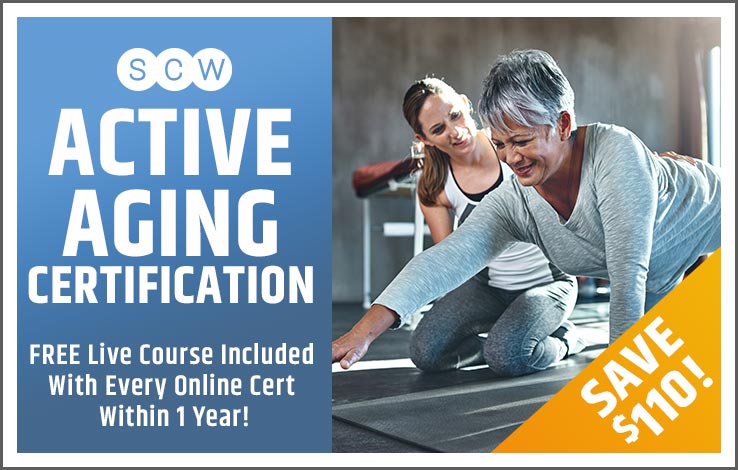 Many senior citizens in the United States have two resources that most fitness professionals look for in clients — time to exercise and the ability to afford it, due to retirement and having the highest concentration of wealth. This doesn’t mean that you start looking at them with dollar signs. That motivation will likely lead to disappointing outcomes. But for those who are looking to serve people in need, training Active Agers is a great way to build your own personal training business.
Many senior citizens in the United States have two resources that most fitness professionals look for in clients — time to exercise and the ability to afford it, due to retirement and having the highest concentration of wealth. This doesn’t mean that you start looking at them with dollar signs. That motivation will likely lead to disappointing outcomes. But for those who are looking to serve people in need, training Active Agers is a great way to build your own personal training business.
How are things different with Active Agers?
The main tradeoff personal trainers will need to make is to their approach and programming. You might need to spend more time on balance or flexibility training or be preparing their body for faster recover after surgery. Sometimes, your services could give a lonely person a sense of community while helping them live better.
Younger clients can usually partake in a health assessment/PAR-Q with accurate answers, but with Active Agers it is a good idea to consult directly with their doctor, of course with their permission. This opens up communication to provide better service with more successful results and gives you more confidence to assess the client’s health and activity level, as well as work towards specific wellness-related goals.
You may have to be a bit more careful and take things a little more slowly, but the rewards that come with serving people in need will more than make up for a change in pace. It’s a long road filled with amazing and loyal people.
For more information on Active Aging and a roadmap to make this business plan work for you, check out the Fit Fix Now website and blog.
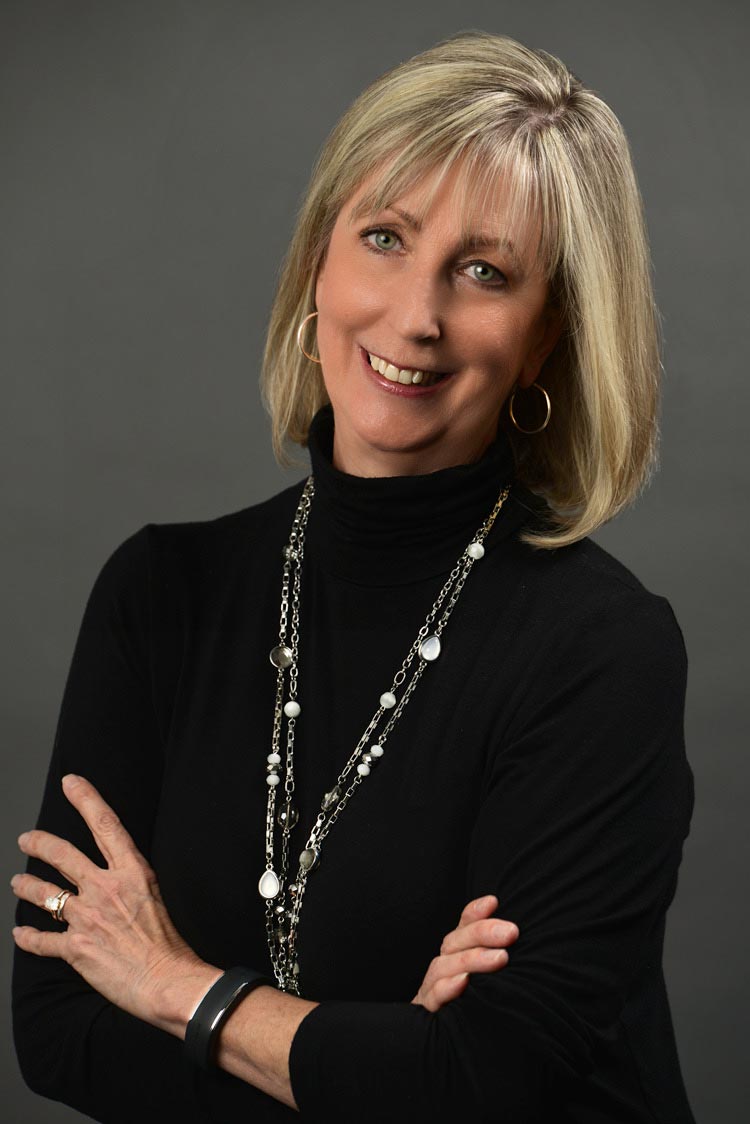 About the Author, Jane Curth
About the Author, Jane Curth
Jane Curth has taught college for over 20 years, has presented at 18 local and national conferences and is an ACE (American Council on Exercise) certified trainer. During her tenure at the college she developed many online courses in her career and turned that expertise into her company, FitFixNow. The purpose of this new company is to offer online courses to fitness professionals so they can get their continuing education credits at an affordable price and at their convenience. FitFixNow’s purpose is to help bring this industry into the new millennium.
In addition to being the CEO of FitFixNow, Jane is a consultant and model for Silver Sneakers, and is a former member of the over-50 hip-hop Atlanta dance group, Silver Classix Crew, performing at several Atlanta Hawks games, charity events, television shows, and festivals. Jane also likes sharing her knowledge with the next generation by being actively involved in The Mentor Project.
She enjoys spending time with her husband, grown kids, and grandkids. She loves reading, creating new courses, and her precious rescue dog Allie.

CEO of Pfizer, Son of Holocaust Survivors Sends the Vaccine to Germany
by Sara Kooperman, JD
Over 80 years ago, in Greece, sixty thousand Jews lived peacefully in Thessaloniki. It was a valued and vibrant community. Most of these Jews worked in the port. So much so that the port of Thessaloniki was even closed on Saturday, Shabbat. Great emeritus rabbis also lived and studied there. Everyone rubbed shoulders and appreciated each other.
But on September 2, 1939, on the eve of the outbreak of World War II, it is on this great community that the Nazi terror will suddenly rise. On April 6, 1941, Hitler invaded Greece in order to secure its southern front before launching the famous Operation Barbarossa and its great offensive against Russia. Of the 60,000 Jews in Thessaloniki, around 50,000 will be exterminated at the Birkenau concentration camp, in record time!
The massacre of the Jews of Greece was brief but intense. Very few will have the chance to make it. But among the survivors there was a family known as Bourla.
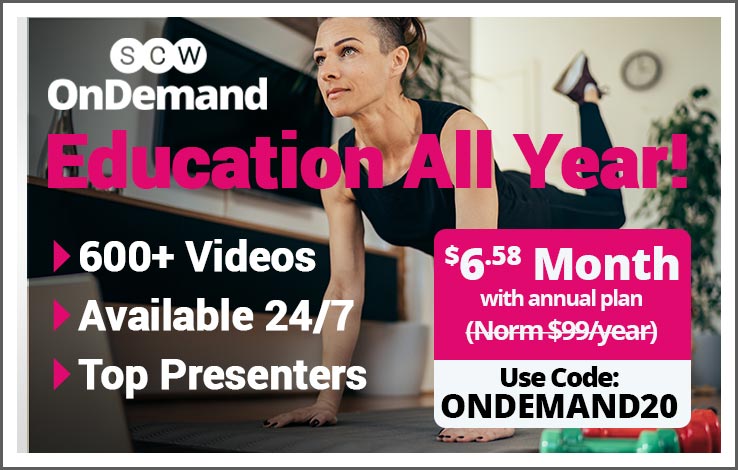 And after the war, in 1961, a son was born into this miraculous family in the camps. His parents called him Israel – Abraham. He grew up and studied veterinary medicine in Greece. A brilliant student, Abraham will get his doctorate in reproductive biotechnology at the veterinary school of Aristotle University in Salonika.
And after the war, in 1961, a son was born into this miraculous family in the camps. His parents called him Israel – Abraham. He grew up and studied veterinary medicine in Greece. A brilliant student, Abraham will get his doctorate in reproductive biotechnology at the veterinary school of Aristotle University in Salonika.
At the age of 34, he decided to move to the United States. He changes his first name Abraham, to Albert.
Albert was integrated into the medical industry. He progressed quickly and joined a pharmaceutical company where he became “Head Manager.” Abraham (Albert) rose through the ranks and got his appointment as CEO of this company in 2019.
Throughout the year Albert decides to direct the efforts of the company to try to find a vaccine against a new virus (COVID) which has just struck the world. He expends great financial and technological efforts to achieve his goal.
A year later the WHO (World Health Organization) validates his company to produce the long-awaited vaccine … His vaccine will be distributed in several countries including Germany, which counts thousands of dead from the pandemic.
Ironically, this vaccine which will save the lives of millions of people around the world including many Germans, was led and pushed by a little Jew from Thessaloniki, son of Holocaust survivors from whom most of his people were exterminated by Nazi Germany.
And that is why Israel became the first country to receive the vaccine. In memory of his grandparents and his parents, who gave birth to Israel-Abraham Bourla, known today as Albert Bourla: CEO of Pfizer.
“An important message from this pandemic is that we are one world, united in an effort to survive. Let this new normal be a time of reflection and peace. “ Sara Kooperman, CEO, SCW Fitness Education and WATERinMOTION®.
 About the Author, Sara Kooperman, JD
About the Author, Sara Kooperman, JD
Sara, CEO of SCW Fitness Education and WATERinMOTION®, is a visionary leader that has transformed the fitness education community. A successful business owner and advisor, she is a keynote speaker, published author, podcast presenter and sought-after industry trail-blazer. Sara has a unique ability to share her passion and devotion towards fitness education through her humor, enthusiasm and her effervescent no-nonsense personality. She serves on the Gold’s Gym Think Tank, was on the Women in Fitness Association Board of Directors and is a proud inductee into the National Fitness Hall of Fame. Sara currently serves on IHRSA’s Headlight Committees for Facility Standards and has left an indelible mark on the fitness industry as a whole.

The Top 5 Meal Prep Mistakes
by Dr. Candice Seti, Psy.D.
Meal prep can be an invaluable way to help keep you eating healthy and staying focused throughout the week. But believe it or not, there are some ways meal prep can go wrong and may zap some of the benefits from your meal prep! Read on for the top five meal prep mistakes.

Random or Inconsistent Food Prep
The key to making food prep work for you is making it routine. If it is haphazard or random, it is much more difficult to make it a habit and even more difficult to plan your week around it. Instead, choose a day and time (for most people this is usually Sunday afternoon) that you are going to do your food prep and stick with it! Block out 1-2 hours on that day and listen to some music, a podcast, or prep with a friend. The key is to make it easy and make it a habit.
Prepping the Same Foods Every Time
If you make chicken breast and broccoli every Sunday, you are going to get sick of those foods very quickly! You want your prepped foods to be enticing and exciting, not boring! The key is variation. If you switch things up week-to-week, you could have three weeks that look like this:
- Week 1- Chicken Breasts, brussels sprouts, broccoli, onions, sweet potato chili
- Week 2- Tofu, peppers, tomatoes, cauliflower, quinoa casserole
- Week 3- Salmon, green beans, carrots, zucchini, 3-bean stew
The idea is to make sure you are prepping different foods each week so you are always looking forward to something new and eating all of your prepped foods!
Not Prepping Breakfast
A lot of people tend to forget about the idea of including breakfast in their weekly meal prep. But breakfast can be much more exciting, and probably healthier, if it’s prepped ahead of time. You can make some overnight oats in mason jars, some egg muffins to eat throughout the week, or even your own homemade protein bars. But having breakfast prepped will ensure you that you have a healthy and delicious start to your day which will set you up to continue that health focus throughout the day.
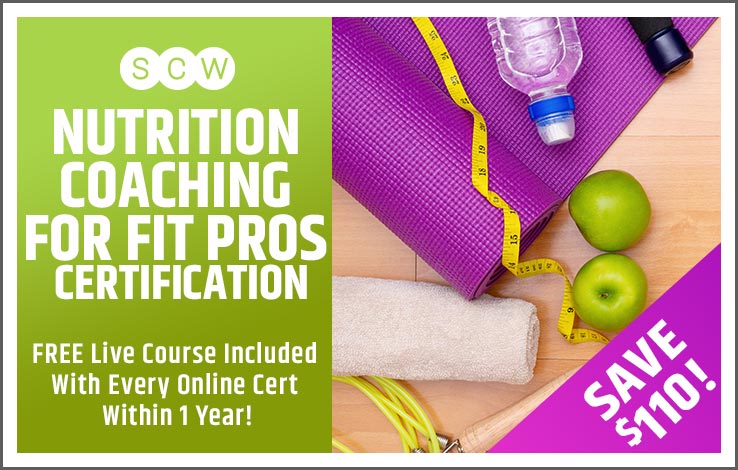
Prepping Health over Taste
Let’s be honest here- if you are prepping something SOLELY because it’s healthy and not because it’s delicious, it’s not going to be long before you completely blow off all your food prep and hit the drive-through! So, instead of focusing on bland and boring health food, choose healthy dishes that are also delicious and enticing. Spend some time on nutrition food blogs or exploring Pinterest and put together a list of fun options including at least one of those fun recipes in your food prep every week.
Over-Prepping
We know food prep can be valuable but prepping too much food can set you up for some negative outcomes. If you prep more food than you can eat, you run the risk of it going bad or losing interest and getting sick of it. Both of those situations can be a set up to opt out of food prep in the future and turning to quick and unhealthy grab-and-go options instead. So, make sure you are only prepping just enough to get you through the week.
Well there you have it. Watch out for these common food prep mistakes to ensure you are getting the biggest benefit for your time and effort!
To learn more helpful tips from Dr. Candice Seti, Psy.D, along with many other elite presenters, register now for Live-Stream MANIA® Express and recharge your toolbox with the latest education specially designed for Fitness Professionals.
 About the Author, Dr. Candice Seti, Psy.D.
About the Author, Dr. Candice Seti, Psy.D.
Known as “The Weight-Loss Therapist” online, Dr. Seti is a licensed clinical psychologist, certified nutrition coach, certified weight management specialist, certified expert life coach, certified personal trainer, and certified insomnia treatment clinician with a private practice in San Diego, California. She is the author of Shatter the Yoyo, a featured contributor to numerous blogs, and has appeared on many television and radio networks. Dr. Candice Seti is committed to helping others achieve health and wellness while gaining self-confidence, stopping self-sabotage, and achieving their goals through behavioral lifestyle and cognitive changes.

Breakfast Egg Muffins
INGREDIENTS
- 6 eggs
- 1/4 lb. Reduced Fat Sausage *Vegetarians can substitute Veggie Crumbles or omit
- 1/3 cup chopped onion
- 1/3 cup chopped shiitake mushrooms
- 1/2 cup chopped fresh spinach
- Iodized salt and pepper to taste
- 1 Avocado
- Salsa (Optional)
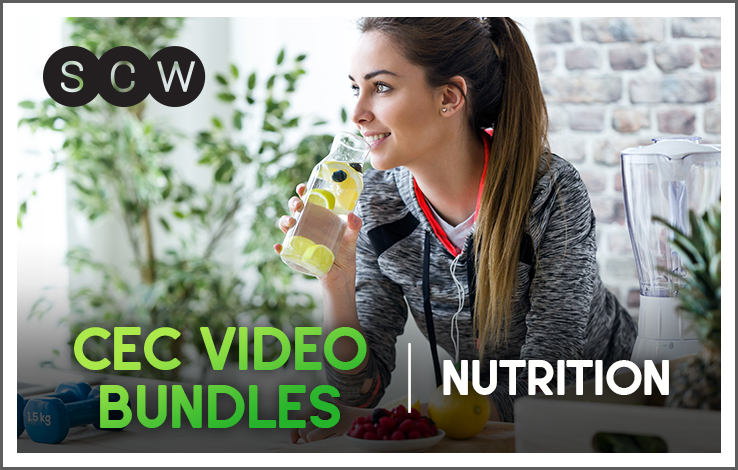
DIRECTIONS
- Preheat oven to 350 degrees. Cook sausage (or vegetarian substitute) in a pan over medium heat until cooked.
- Spray muffin tins with non-stick cooking spray. Crack and stir eggs until they are ready for scrambling. Mix in all other ingredients except salsa. Mix in cooked sausage. Pour contents evenly between 6 muffin tin holes. Bake for 20-25 minutes or until knife inserted in the middle comes out clean.
- Allow to cool and refrigerate muffins until ready to eat. Muffins can be reheated in the microwave, oven, or toaster oven and eaten with fresh salsa and/or ¼ of an avocado, if desired.
 About the Author, Amanda Fearheiley, RDN, LD, CPT
Amanda has been a registered and licensed dietitian for over 20 years and has been immersed in the fitness field for over 15 years. Her passion is helping others learn how to use food as fuel and food for improving health. She has worked with both day to day athletes as well as pro athletes. She currently resides in the Austin, TX, area with her husband and 3 children.
About the Author, Amanda Fearheiley, RDN, LD, CPT
Amanda has been a registered and licensed dietitian for over 20 years and has been immersed in the fitness field for over 15 years. Her passion is helping others learn how to use food as fuel and food for improving health. She has worked with both day to day athletes as well as pro athletes. She currently resides in the Austin, TX, area with her husband and 3 children. 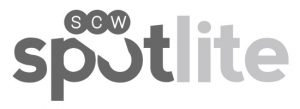 We’re always looking for great content highlighting the newest things in the world of fitness. Please submit your article directly to editor@scwfit.com for immediate consideration!
We’re always looking for great content highlighting the newest things in the world of fitness. Please submit your article directly to editor@scwfit.com for immediate consideration! Spotlite, April 9, 2025
Spotlite, January 5, 2025
Spotlite, November 11, 2024
Spotlite, September 27, 2024
Spotlite, August 31, 2024
Spotlite, July 26, 2024
Spotlite, June 22, 2024
Spotlite, May 23, 2024
Spotlite, April 26, 2024
Spotlite, March 22, 2024
Spotlite, February 19, 2024
Spotlite, January 20, 2024
Spotlite, December 21, 2023
Spotlite, November 18, 2023
Spotlite, October 22, 2023
Spotlite, September 21, 2023
Spotlite, August 19, 2023
Spotlite, July 19, 2023
Spotlite, June 19, 2023
Spotlite, May 18, 2023
Spotlite, April 21, 2023
Spotlite, March 28, 2023
Spotlite, February 18, 2023
Spotlite, January 21, 2023
Spotlite, December 16, 2022
Spotlite, November 19, 2022
Spotlite, October 22, 2022
Spotlite, September 24, 2022
Spotlite, August 23, 2022
Spotlite, July 22, 2022
Spotlite, June 20, 2022
Spotlite, May 18, 2022
Spotlite, April 20, 2022
Spotlite, March 25, 2022
Spotlite, February 17, 2022
Spotlite, January 14, 2022
Spotlite, December 17, 2021
Spotlite, November 18, 2021
Spotlite, October 25, 2021
Spotlite, September 16, 2021
Spotlite, August 9, 2021
Spotlite, July 10, 2021
Spotlite, June 8, 2021
Spotlite, May 14, 2021
Spotlite, April 30, 2021
Spotlite, March 30, 2021
Spotlite, February 23, 2021
Spotlite, January 20, 2021

